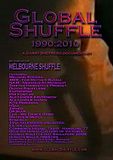There have always been attempts to generalise and put music into different boxes. Sometimes it can lead to stifening and clichéd thinking, but I think it's a useful tool in many ways - thinking about music in categories can help you develop a more complex understanding of it.
A fairly traditional way of trying to categorise popular music is to set up a number of dichotomies. For example:

Here commercial music, with pure pop as some sort of extreme, is pitted against non-commercial music with people making music only for their own enjoyment or for "art". Although very simplistic, this kind of division can help examine motivations and uses of music, and perhaps examine what musical characteristics are typical for each end.
Other examples would be
complex vs
simple music,
professional vs
amateur music, etc. etc. But here we encounter a problem. None of these categories really overlap. Non-commercial music can be either professional or amateur without any significant problems. Simple music can be both non-commercial and commercial. And so on. One way of dealing with this is to accept a multifaceted complex of different non-overlapping characteristics, but I think there's a more interesting (and hopefully revealing) option available.
I want to bring back the dreaded and widely discredited triangle.

This thing turned up several times in the first month of musicology classes and is a classic piece of bad old-fashioned musicology (which the field by the way if rife with). The basic idea is that there's three kinds of music. "Art music" is the music of the elites and the grand western tradition. "Folk music" is the music of the pre-modern common people, oral traditions within smaller communities. And "popular music" is the music of the modern, mediated, industrial masses.
This is a hugely problematic way of division. It's got unconscious prejudices built in. (I mean, "art music"? Come on.) It makes a very arbitrary division between popular and folk music, both of which essentially mean "music of the people". It seems very closely connected to outdated ideas of one or two categories being of higher quality than the others, particularly racking down on popular music.
It does have one significant advantage though and that's the fact that it's fairly good at dealing with our dichotomies from before. For instance, popular music and folk music both tend to be fairly simple compared to the complexities of art music. That means you could draw a diagram like this:

A similar division can then easily be made for professionality (popular and art music tends to be professional, folk music amateur) or commerciality (popular music tends to be commercial compared to art music and folk music). Or any of a number of other factors. Plus there are factors that very clearly have three different answers, like who the music is for - the masses, your community or no-one/yourself/art? Each one fits nicely into one category.
I think if you limit the triangle to the popular music corner of the field, it makes much more sense than the whole thing. All popular music is to a certain extent mediated, commercial and mass-oriented (I'll freely admit) but you can easily find examples of popular music that exhibit relatively little of these characteristics, in different ways.
This is especially true since about 1967. In the rock era there's been three diverging directions of popular music that fit relatively well with the three traditional definitions. There's the thread of "intelligent", "independent", "progressive" music, ranging from prog rock to post-punk to idm. There's the pure commercial pop, made more extreme from bubblegum onwards. And there's a huge plethora of smaller music-making communities like hyphy or bluegrass or soca or whatever that are, relatively, folk.

Thus we can construct a triangle with "folky" popular music (community-oriented, limited distribution, often amateur initially), "arty" popular music (complex, pretentious, created for art's sake) and... a third category. I hate to call this "pure" popular music because I think most popular music actually tends to fall into the other two categories, but let's just call it "pure commercial pop" or something.
I think this is a useful way of dividing popular music. Mostly, I think we can create excellent systems of characteristics for the three different categories. For instance, arty-pop tends to be consumed and produced by the upper-middle-class, folky-pop tends to be produced and consumed by the lower-middle and working classes, while commercial pop tends to be produced by the upper classes for the consumption of the lower...
I'll highlight two more I think are a bit interesting. First is the genres. The vast majority of tiny, insteresting genres will actually fall into the folky-pop category, simply because genre = scene = community. Arty-pop musicians tend to think themselves beyond mere genres, and all commercial pop falls into one or two broad genres like "pop".
Then there's consumer age. At any normal school (as, I think, Simon Firth first explored) the youngest kids will listen to commercial-pop, the young teens will tend towards folky-pop and older teens will disproportionally listen to arty-pop.
As you can see it's not a bad tool for categorisation and it fits neatly with lots of three-part divisions. I'll try to return to the triangle in the following two posts to talk about traditional arguments about music and how they interact with the triangle, and about the musical characteristics of the three different ends.

























































